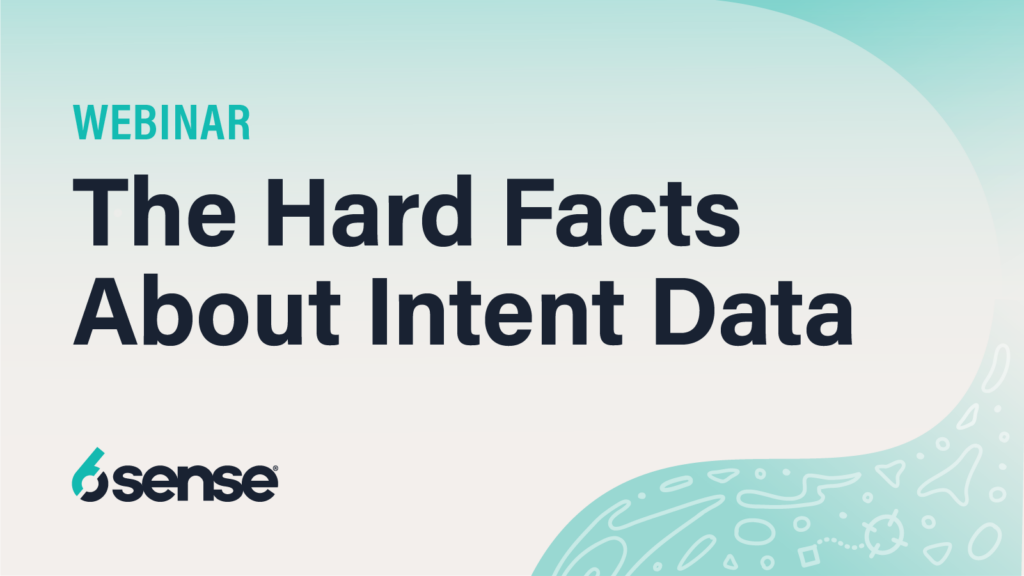B2B sales isn’t easy. To properly serve potential customers, you need to understand them. And for most sellers, that means their day starts with a digital scavenger hunt.
Instead of spending their time focused on having great conversations with buyers, sellers spend 72% of their time on non-selling activities — like juggling systems that offer mere fragments of the info they need, and then piecing together clues in an attempt to build a clear path to revenue.
That’s the bad news. Here’s the good news: It doesn’t have to be this difficult.
System and Information Overload
According to Salesforce, 66% of sellers say they’re overwhelmed by the number of tools at their disposal; in fact, they use an average of 10 tools throughout a deal lifecycle.
That means a lot of a seller’s time is consumed by:
- Updating multiple systems
- Logging into different platforms to access different information about their prospects, and
- Hunting for context to help improve and prioritize outreach
The modern sales toolbox is too focused on providing more data until sellers are overwhelmed by too many choices and too much data.
To streamline their toolbox and daily routines, sellers need more intelligence, not more data.
More Signal, Less Noise
Intelligence synthesizes mountains of data and helps sellers focus.
Sales intelligence optimizes every stage of the buying journey by:
- Making it easier to prioritize during the prospecting process thanks to insights into ready-to-buy accounts, and
- Serving up deeper insights about accounts, enabling a more personalized engagement throughout the buying journey
Here’s how sales intelligence cuts through the clutter to deliver the critical information you need to close more deals.
How Data Intelligence Points You in the Right Direction
Sellers spend nearly a third of their time prospecting and trying to prioritize their activities.
They manually trawl through LinkedIn, inbound leads, and MQLs looking for clues to determine when an account is ready to buy.
After picking an account or contact to engage — sometimes at random, or based on arbitrary lead scoring criteria — they spend time crafting outreach that will hopefully dazzle a buyer and get them moving through the funnel.
But sellers often reach out to the wrong account, or choose the wrong time. If a company has no budget or need for your product, the the most brilliantly crafted cold email in the world still won’t convince them to buy.
Sales intelligence improves the prospecting process by doing the legwork for you so you can concentrate on accounts that are ready to buy.
Know Who to Target
When a seller logs into a sales intelligence platform (like 6sense), they will see the accounts that are actively in-market and looking for solutions like yours.
These accounts are revealed through buying intent signals like:
- Searching topics related to your services
- Visiting your website and reading your content
- Researching vendors on industry publications and third-party review websites
Potential buyers engage in these research activities long before they reveal themselves to sellers by filling out a website form. And there’s a good chance they will never fill out a form on your site.
By tapping into these buying signals, you can gain the inside track on building relationships within these accounts and make sure you don’t miss opportunities.
Sales intelligence lets sellers know which accounts they should be engaging with.
Know Who to Prioritize
Sales intelligence helps sellers prioritize by giving clear information like:
- Hot accounts: The companies performing the most activities and showing signs of buying intent
- Recent activities: The most recent engagements that can reveal an increase in activity at an account or a new buyer beginning their journey
- Recommended actions: AI-powered recommendations on the steps your sellers should take to engage with an account or a buying team
Sellers who log into a sales intelligence platform can plan their day in just a few minutes.
How Data Intelligence Helps You Win Trust
Sales intelligence does more than let you know who is in-market. It can also tell you why.
Buyers crave personalized sales experiences and sales intelligence makes it easier to deliver what your buyers want.
Without the types of insights sales intelligence provides, sellers can only provide surface-level personalization that doesn’t speak directly to a buyer’s unique circumstances.
But with sales intelligence, sellers can use real-time data about the actual products and pain points specific to an account to craft highly personalized campaigns and deliver thoughtful conversations tailored for each buyer.
Deeper Insights
Let’s take a closer look at the data you can use to personalize your messaging. A sales intelligence platform answers questions regarding:
- Technographics: What technology does an account use and how does it align with your offering?
- Psychographics: What topics drive the most interest at an account or with a buyer?
- Market Insights: Is an account growing? Have they just landed a new round of funding meaning there’s increased budgets?
In the span of a few clicks, sellers can use a sales intelligence platform to compile a complete dossier.
Easier Multi-Threading
Top sellers are more likely to multi-thread throughout the lifecycle of their deals.
Why? Because multi-threading increases the likelihood of winning a deal by building relationships across the entire buying committee of an account.
Without sales intelligence, multi-threading can be a difficult task that requires logging into multiple systems to hunt for new contacts, searching through dozens of LinkedIn pages, and trying to find contact information.
Sales intelligence removes those roadblocks by;
- Making it easy to quickly uncover key titles within a priority account
- Providing plugins that give sellers access to buying signals and contact info as they browse an account’s website
Conclusion
There are many tools sellers can use to learn about prospects, but most of these tools only reveal a small part of the picture. They also provide plenty of data, but require time and effort from a seller that they’d rather spend selling.
What sellers need is a single clearinghouse they can use to stay focused on the best opportunities, and a platform that can help them quickly understand and connect with decision makers on buying teams. Sellers need more intelligence, not more data.






